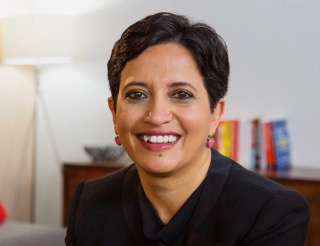Building a Venture Scale Enterprise AI Company from Spain: David Villalon, CEO of Maisa (Part 5)
Sramana Mitra: There’s no need to open anything to everyone. I think it’s very good to stay focused, especially because your strategy is a land-and-expand strategy. You get in through finance, do one use case, then ten, then a hundred. You want a set of large customers where you can expand and make each customer a multimillion-dollar deal. That’s really the kind of business you want to build.
David Villalon: Exactly, yes.
Sramana Mitra: Tell me how you charge. What has been the thinking and evolution of your business model and pricing model?
David Villalon: How we charge today is simple. There’s a platform fee that depends on whether it’s cloud-based or on-premise, since we can deploy on the customer’s infrastructure or host it ourselves. The platform fee covers licensing and includes five creator or worker seats.
We charge per worker that’s deployed in production. Customers can create, test, and validate as much as they want—we only make money when those workers go live in production. Essentially, clients pay once the automation delivers value.
The platform fee covers usage, costs, and onboarding support for the first use case, helping the company adopt and integrate the platform. Then we charge per worker that’s in production.
Sramana Mitra: What is the pricing—how much do you charge for the platform and per worker?
David Villalon: We’re still refining it, but typically pricing starts around $80,000 to $90,000 a year. That includes the full platform, services, and support to get the first use cases into production successfully. It usually covers five to ten workers, and we start negotiating from there.
The ROI is usually achieved within one to two months. For example, we have a “power of attorney” use case that automates extraction and classification for a legal team, saving around 40,000 hours a year in one country for a single corporation.
These aren’t small sales. We’re talking about complex, high-value tasks done by skilled professionals that can now be automated. Humans only need to intervene when something goes wrong, and the platform alerts them if that happens. If everything runs smoothly, it continues autonomously. That’s a key part of our value.
Sramana Mitra: And when you start charging for the workers, how do you calculate that?
David Villalon: A “worker” is an automated use case. Pricing depends on volume. For example, five workers might cost about $15,000 per year, while larger deployments—say, a hundred workers—can go as low as $7,000 per worker per year, or even less per use case.
We don’t use value-based pricing right now because it adds complexity. Our goal is to make adoption easy and allow customers to scale freely.
We also have unlimited licensing deals for very large corporations. In those, we don’t charge per worker—customers can deploy as many as they want on their own cloud. They have full control over the models and processes, and we’re completely agnostic about the tech they use.
In these cases, there’s no limit—you can build 1,000 or even a million use cases without extra cost. Large enterprises like this model because they no longer need to buy separate vertical solutions for each process.
Sramana Mitra: So that’s a much larger deal, more like a big licensing agreement.
David Villalon: Yes, but it’s structured as an annual subscription contract.
This segment is part 5 in the series : Building a Venture Scale Enterprise AI Company from Spain: David Villalon, CEO of Maisa
1 2 3 4 5
Featured Videos
Can 1M/1M Help Me Raise Money?
How Does 1M/1M Democratize Entrepreneurship Education?
How Does 1M/1M Democratize Management Consulting?
When Is The Right Time To Join 1M/1M?
Can 1M/1M Help Me With Business Development?
Can 1M/1M Help Me With Market Sizing?
Can 1M/1M Help Me Validate My Product?
Will I Have Private 1-on-1 Sessions In 1M/1M?
How Does 1M/1M Help Entrepreneurs Connect With Silicon Valley?
Mentoring or Consulting?
Why Does 1M/1M Charge $1000 a Year?
Why Does 1M/1M Partner With Local Organizations?
Why Don\’t Mentoring Networks Work?
Why Is It Important To Study With 1M/1M Now?
Dan Stewart Story
Vikrant Mathur Story
